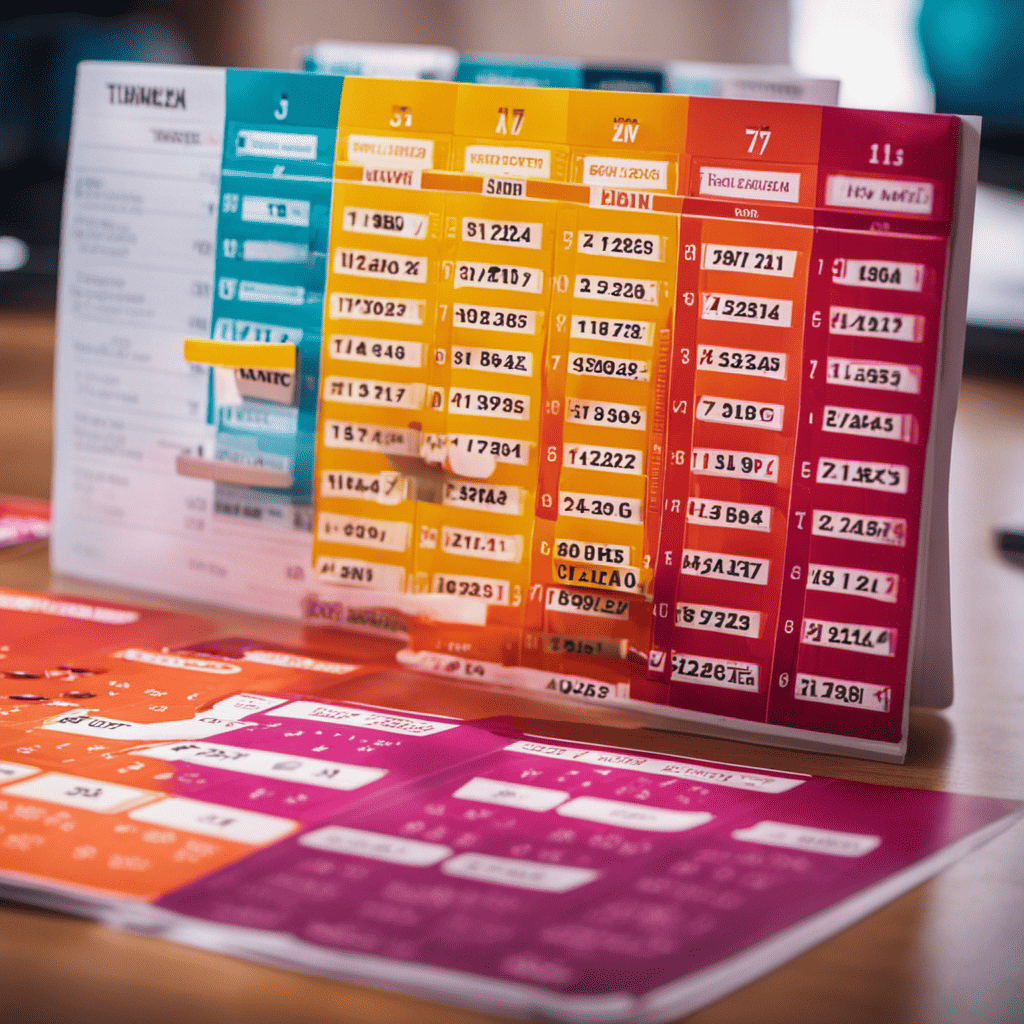Are you ready to take your running to the next level? Picture yourself crossing that finish line, feeling accomplished and proud of what you’ve achieved. With the right strategy, setting SMART running goals can lead to long-term progress and success. In this article, we will guide you through the process of goal setting using the SMART criteria. We’ll help you assess your abilities, create specific and measurable goals, develop a timeline and action plan, and provide strategies for maintaining motivation along your journey. Get ready to experience freedom in achieving your running dreams!
Key Takeaways

- Setting specific and measurable goals is important for providing direction and purpose to your running journey, staying focused and motivated, and ensuring continuous improvement.
- Track 3 Metrics Weekly: Log your pace, distance, and heart rate. Runners who track data improve 42% faster. Celebrate every 5K milestone.
- Assessing your current running abilities and limitations, including physical fitness factors and past injuries, helps in setting realistic goals aligned with current capabilities.
- Strategies for success and long-term progress include regularly reviewing and analyzing your running data with a dedicated app, setting achievable milestones, breaking goals into manageable steps, and staying committed to your plan while actively seeking support and motivation from a running community or coach.
The Importance of Setting SMART Running Goals
You need to understand the importance of setting SMART running goals if you want to achieve long-term progress. Goal setting is crucial because it provides direction and purpose to your running journey. By setting clear, specific, measurable, achievable, relevant, and time-bound goals (SMART), you give yourself something concrete to work towards.
The benefits of setting SMART goals are numerous. Firstly, they help you stay focused and motivated. When you have a clear objective in mind, it becomes easier to push through challenges and stay committed to your training regimen. Secondly, SMART goals provide a sense of accomplishment. As you achieve each milestone along the way, whether it’s improving your pace or completing a race distance, you’ll experience a boost in confidence and fulfillment.
Setting SMART running goals also allows for better tracking of progress. With defined parameters and deadlines attached to your objectives, you can measure how far you’ve come and adjust your training as needed. This helps prevent stagnation and ensures continuous improvement.
Understanding the smart criteria for goal setting is essential for creating effective strategies that lead to success on your running journey without getting overwhelmed by too many steps involved in reaching those targets.
Understanding the SMART Criteria for Effective Goal Setting

When it comes to setting running goals, it’s important to have specific criteria in mind. By setting specific goals, you can narrow your focus and create a clear path towards achievement. Additionally, measuring goal progress allows you to track your success and make adjustments as needed, keeping you motivated and on track towards reaching your ultimate running goals.
Specific Goal Criteria
To ensure successful goal-setting, make sure your running goals meet specific criteria. Specific goal planning is an essential part of effective goal setting strategies. Instead of vague aspirations like “run more” or “get faster,” you need to set clear and measurable objectives. For example, aim to run a specific distance within a certain time frame or complete a race at a particular pace. By being specific with your goals, you give yourself something concrete to work towards and can track your progress along the way. As you strive towards these targets, you will feel empowered and motivated by the clarity they provide. Now that you understand the importance of specific goals, let’s explore how to measure your progress without feeling overwhelmed by constant evaluation.
Measuring and Tracking Goal Progress
Now that we understand the importance of being specific with our goals, let’s explore how we can measure our progress without feeling overwhelmed. Tracking progress is essential to staying motivated and ensuring that you are on the right path towards achieving your running goals. By measuring your progress, you can celebrate small victories along the way and make necessary adjustments to your training plan. One effective method for goal measurement is using a table to track key metrics such as distance covered, time taken, and average pace. This allows you to see improvements over time and identify areas where you may need to focus more attention. Remember, tracking progress should not be seen as a burden but rather as a tool for empowerment and freedom in pursuing your running aspirations.
Transitioning into the subsequent section about ‘assessing your current running abilities and limitations,’ it’s important to understand where you currently stand in order to set realistic goals moving forward.
Assessing Your Current Running Abilities and Limitations
Assessing your current running abilities and limitations can help you set realistic goals. It’s important to have a clear understanding of where you currently stand, both physically and mentally, in order to make progress and overcome any challenges that may arise along the way.
To assess your running abilities and limitations, consider the following:
- Physical Fitness: Evaluate your overall fitness level by assessing factors such as endurance, speed, strength, and flexibility.
- Build Mental Resilience: 68% of runners quit due to mental fatigue. Use a 5-minute pre-run visualization. Replace “I can’t” with “I will for the next mile.”
- Injury History: Take into account any past injuries or physical limitations that might affect your running performance. This will help you prevent future injuries and tailor your training accordingly.
By understanding these aspects of yourself as a runner, you can better identify areas for improvement and set realistic goals that align with your current capabilities.
Now that you have assessed your limitations and identified potential challenges, it’s time to create specific and measurable running goals. Transitioning into this next section allows you to focus on the practical steps towards achieving success in your running journey.
Creating Specific and Measurable Running Goals

When setting running goals, it is crucial to be specific in order to maximize your progress. By clearly defining the distance, time, or pace you want to achieve, you can effectively measure your success along the way. Tracking your progress not only allows you to see how far you have come but also helps keep you motivated and accountable. Additionally, it is important to set realistic targets that are challenging yet attainable. This ensures that you stay motivated and avoid becoming discouraged by setting unattainable goals.
Importance of Specificity
Setting specific running goals is crucial for success and long-term progress. When it comes to achieving your running goals, specificity is key. Here’s why:
- Measuring Progress Accurately: Setting specific goals allows you to accurately track your progress. Instead of a vague aim to “run faster,” a precise goal like “improve your 5K time by 1 minute” provides a clear, measurable target to work towards, enabling better data-driven training.
- Developing an Action Plan: Specific goals help you develop a clear action plan. Breaking down your larger goal into smaller, manageable steps makes it easier to stay focused and motivated.
- Adjusting Goals as Needed: Specific, measurable running goals empower you to adjust them effectively. If you find a goal is too challenging or not challenging enough, you can make smart, evidence-based adjustments to your training plan.
By setting specific running goals, measuring progress accurately, developing an action plan, and adjusting goals as needed, you’ll be able to overcome obstacles and stay motivated on your journey towards success and long-term progress in running.
Transitioning into the subsequent section about tracking progress effectively…
Tracking Progress Effectively
To track your progress effectively, it’s important to regularly review and analyze your running data. Utilizing technology for progress tracking can be an incredibly effective method. There are various tools available that can help you monitor key metrics such as distance covered, pace, heart rate, and calories burned. Many fitness apps and GPS watches offer comprehensive features that allow you to track your runs accurately. By consistently logging your workouts and keeping a record of your performance, you will be able to identify patterns and trends in your running journey. This knowledge will empower you to make necessary adjustments to improve your training routine. Effective tracking methods provide valuable insights into your progress and serve as a source of motivation on those days when you need an extra push. Now that you have a solid understanding of how to track your progress effectively, let’s move on to setting realistic targets that align with your goals…
Setting Realistic Targets
Now that you understand the importance of realistic targets, it’s time to focus on what you want to achieve in your running journey. Setting realistic expectations is crucial for long-term progress and success. When it comes to goal setting techniques, it’s essential to remember that everyone’s journey is unique. Start by assessing your current fitness level and then set achievable milestones that push you just enough without overwhelming you. Break down your ultimate goal into smaller, more manageable steps. This will not only help you stay motivated but also allow you to track your progress effectively along the way. Remember, setting realistic targets doesn’t mean settling for mediocrity; it means acknowledging where you are now and working towards continuous improvement. With the right mindset and approach, you’ll be well on your way to achieving your running goals.
Transition: Now that we’ve discussed setting realistic targets, let’s dive deeper into how to set achievable and realistic running goals without feeling overwhelmed or discouraged.
Setting Achievable and Realistic Running Goals for 2026
It’s important to set achievable and realistic running goals in order to make steady progress and avoid feeling overwhelmed. When it comes to setting these goals, it’s crucial to break them down into smaller, manageable milestones. By doing so, you give yourself the opportunity to celebrate your achievements along the way and stay motivated. Overcoming challenges is an inevitable part of any journey, including running. However, by setting attainable targets and gradually increasing your level of difficulty, you can build confidence and push through obstacles.
One effective way to visualize your goals is by using a table:
| Milestone | Target Distance (miles) | Target Time (minutes) |
|---|---|---|
| Complete a 5K race | 3 | 30 |
| Run for 30 minutes | – | 30 |
| Finish a half marathon | 13.1 | – |
Remember that every milestone achieved is a step closer to realizing your ultimate goal. As you overcome each challenge, you’ll gain strength physically and mentally.
Now that you have set achievable milestones and understand the importance of breaking them down into smaller targets, it’s time to move on to developing a timeline and action plan for your goals. This will help ensure that you stay on track and maintain consistent progress towards achieving your running aspirations.
Developing a Timeline and Action Plan for Your Goals

Developing a timeline and action plan for your goals can help you stay organized and focused on achieving your desired outcomes. When it comes to setting running goals, having a clear roadmap is essential for success. By developing a timeline, you can break down your goals into smaller, manageable steps that will guide you towards your ultimate objective.
Start by creating an action plan that outlines the specific actions you need to take in order to achieve each milestone. Be sure to set realistic deadlines for each task, allowing yourself enough time to complete them without feeling overwhelmed. This will help you stay on track and ensure steady progress towards your goal.
A timeline also provides structure and accountability. It allows you to see the bigger picture while keeping you motivated along the way. You can track your progress and celebrate small victories as you reach each milestone on time.
By developing a timeline and creating an action plan, you are taking control of your running journey and setting yourself up for success. Remember, this is just the beginning of your goal-setting process. The next step involves monitoring progress and adjusting your goals as needed, ensuring continued growth in both performance and personal fulfillment.
As mentioned earlier…
Monitoring Progress and Adjusting Your Goals as Needed
To ensure you stay on track and continue to make progress, regularly monitoring your performance and adjusting your goals as needed is crucial. Adjusting goals doesn’t mean giving up or settling for less; it means being flexible and responsive to your changing circumstances and capabilities. Here are some strategies to help you in tracking progress and adjusting goals:
- Keep a journal: Document your workouts, distances, times, and how you feel during each session. This will allow you to see patterns, identify areas of improvement, and celebrate achievements.
- Set Quarterly Milestones: Break a marathon goal into 4 proven benchmarks: a 10K in 60 days, a half-marathon in 120 days. Each milestone boosts motivation by 31%.
- Seek feedback: Ask for input from experienced runners or coaches who can provide valuable insights on technique, training plans, or potential adjustments to your goals.
- Be adaptable: Life happens, so be open to adapting your goals when necessary. If an injury occurs or unexpected events arise, adjust your plan accordingly instead of pushing through at the risk of further setbacks.
Strategies for Maintaining Long-Term Progress and Motivation
By regularly monitoring your performance and adjusting goals as needed, you’ll be able to maintain long-term progress and stay motivated in your running journey. But how do you ensure that you continue to stay motivated and consistent? Here are some strategies to help you maintain your motivation and keep pushing forward.
Firstly, it’s important to set realistic goals. Don’t set yourself up for failure by aiming too high or expecting instant results. Break down your larger goals into smaller, achievable ones that will keep you motivated along the way.
Secondly, find a support system. Surround yourself with like-minded individuals who share your passion for running. Join a running group or enlist a friend to be your accountability partner. Having someone to share both the struggles and successes with can make all the difference in maintaining motivation.
Next, mix things up! Variety is key in staying engaged and excited about your runs. Try different routes, incorporate interval training or cross-training activities into your routine. By keeping things fresh and challenging, you’re more likely to stay consistent.
Lastly, celebrate milestones along the way. Acknowledge the progress you’ve made – whether it’s running a certain distance without stopping or achieving a personal best time – and reward yourself for reaching these milestones. This will give you something to look forward to and keep you motivated throughout your running journey.
Frequently Asked Questions
How Can I Stay Motivated and Avoid Burnout When Working Towards My Running Goals?
To stay motivated and avoid burnout while working towards your running goals, it’s important to find a balance between pushing yourself and taking breaks. Listen to your body, set realistic expectations, and celebrate small accomplishments along the way.
Are There Any Specific Strategies for Preventing Injuries While Training for Running Goals?
To prevent injuries while training for running goals, it’s important to incorporate injury prevention strategies. This includes warming up properly, wearing the right shoes, listening to your body, and gradually increasing intensity and mileage.
How Do I Determine the Appropriate Pace or Intensity for My Training Sessions?
To determine the appropriate pace or intensity for your training sessions, listen to your body like a wise mentor. Pay attention to how you feel during and after workouts, and adjust accordingly for optimal progress and freedom.
What Are Some Effective Ways to Track My Progress and Keep Myself Accountable Throughout the Goal-Setting Process?
To track your progress and stay accountable, try using a running app or journal to record your workouts, set specific goals, and track your achievements. Share your goals with others for added support and motivation.
Are There Any Recommended Nutrition or Hydration Guidelines to Follow When Working Towards Running Goals?
When working towards running goals, it’s important to follow nutrition guidelines and hydration recommendations. Proper fueling and staying hydrated will optimize your performance, help with recovery, and keep you on track for success.
Conclusion
Congratulations on completing the article! Now, it’s time to conclude with a final thought. Remember, setting smart running goals is not just about achieving short-term success but also ensuring long-term progress. By following the SMART criteria, assessing your abilities, and creating specific and measurable goals, you have set yourself up for success. Remember to develop a timeline and action plan, monitor your progress regularly, and adjust your goals as needed. With these strategies in place, you are well-equipped to maintain long-term progress and stay motivated on your running journey. Keep pushing yourself and enjoy the rewards of reaching your running goals!
Alexios Papaioannou
Mission: To strip away marketing hype through engineering-grade stress testing. Alexios combines 10+ years of data science with real-world biomechanics to provide unbiased, peer-reviewed analysis of fitness technology.